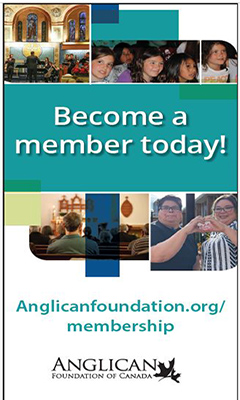In honour of Black History Month, the Diocesan Post offers this excerpt from Go Do Some Great Thing: The Black Pioneers of British Columbia, Third Edition, by Crawford Kilian, 2020, Harbour Publishing, www.harbourpublishing.com. Printed with permission from the publisher.
In 1858, Bill 339 was introduced in the California legislature – “an Act to restrict and prevent the immigration to and residence in the State of negroes and mulattoes.” While the bill never became law, its intent caused Black citizens to consider emigration. After hearing about the virtues of Vancouver Island – and rumours of the gold rush – from the captain of the Commodore, a ship making a regular run between San Francisco and Victoria, a group known as the Pioneer Committee agreed to move.
As many of the Black pioneers were deeply religious, church was an important part of their lives. The Reverend Edward Cridge had invited the Pioneer Committee to attend his services, and many did so. Not all the White parishioners welcomed them, however. One, an American named Sharpstone, published a protest in the Gazette… Sharpstone urged that a section be set aside for the Black churchgoers, “as is done in respectable churches in the world.”
Cridge himself wrote to the Gazette, reproving his congregation for its intolerance. Some White parishioners thereupon left the church, while others resorted to awkward stratagems to put distance between themselves and the Black churchgoers…
The issue erupted in another church – the mission established by Rev. William F. Clarke. Early in 1859, the Congregational Unions of England and Canada had appointed Clarke to undertake the mission to Vancouver Island… In his last appointment in Wisconsin, Clarke had been an outspoken opponent of slavery, and his reputation had preceded him to Victoria. Perhaps for this reason, he soon attracted a sizable number of Black attendees to his services. But his very first congregation also included some White participants who, the following day, asked him what he intended to do about the fact that Black people had sat intermingled with others. “Nothing,” Clarke retorted. Indignant, the White churchgoers told him they would have nothing more to do with his mission… Clarke brought the matter up before the whole congregation, telling them he would have nothing to do with a “negro corner.”
At this point Rev. Matthew Macfie arrived in Victoria. He had been expected to cooperate with Clarke; instead he broke almost at once with him over the segregation issue and began holding separate services. The Canadian Congregationalists, upon hearing of Macfie’s move, were scandalized…
As many of the Black pioneers were deeply religious, church was an important part of their lives. The Revernt Edward Cridge had invited the Pioneer Committee to attend his services, and many did so.
This was now more than a minor sectarian squabble. By now the young colony had a new Anglican bishop, the Right Reverend George Hills, who supported integrated congregations… Hills himself became increasingly involved in the issue. An American Episcopalian woman told him she opposed segregation, but most Americans in Victoria refused to attend Christ Church because it was integrated. She also shocked him with the news that the wife of the bishop of Oregon owned slaves. “Just the thought sickens me,” Hills wrote. He began to fear that the Black settlers would not be free “even on British soil.”
Meanwhile Clarke faced growing difficulties. His children were harassed for having a “[Black] preacher” for a father, and for having to sit with Black people in church… Bishop Hills tried and failed to recruit Clarke into the Church of England, and then faced increasing race problems. A Roman Catholic school had recently bowed to parental pressure for segregation of Black and Indigenous children from White children. The non-White parents had understandably pulled their children from the school. Hills saw this as another good reason to open an unsegregated Anglican school and told his congregation he would work to create such a school. This caused him to be ostracized by some residents.
With the benefit of historical hindsight, we can see that the passengers on the Commodore in April 1858 foreshadowed the experience of future immigrants. They would come in hope of economic success and political equality; they would encounter political corruption and incompetence, demagoguery and stereotyping. Their adversaries would claim that they couldn’t assimilate, when the newcomers demonstrated again and again that they could adopt the competitive, free enterprise democratic values of Canada and prosper under them.


